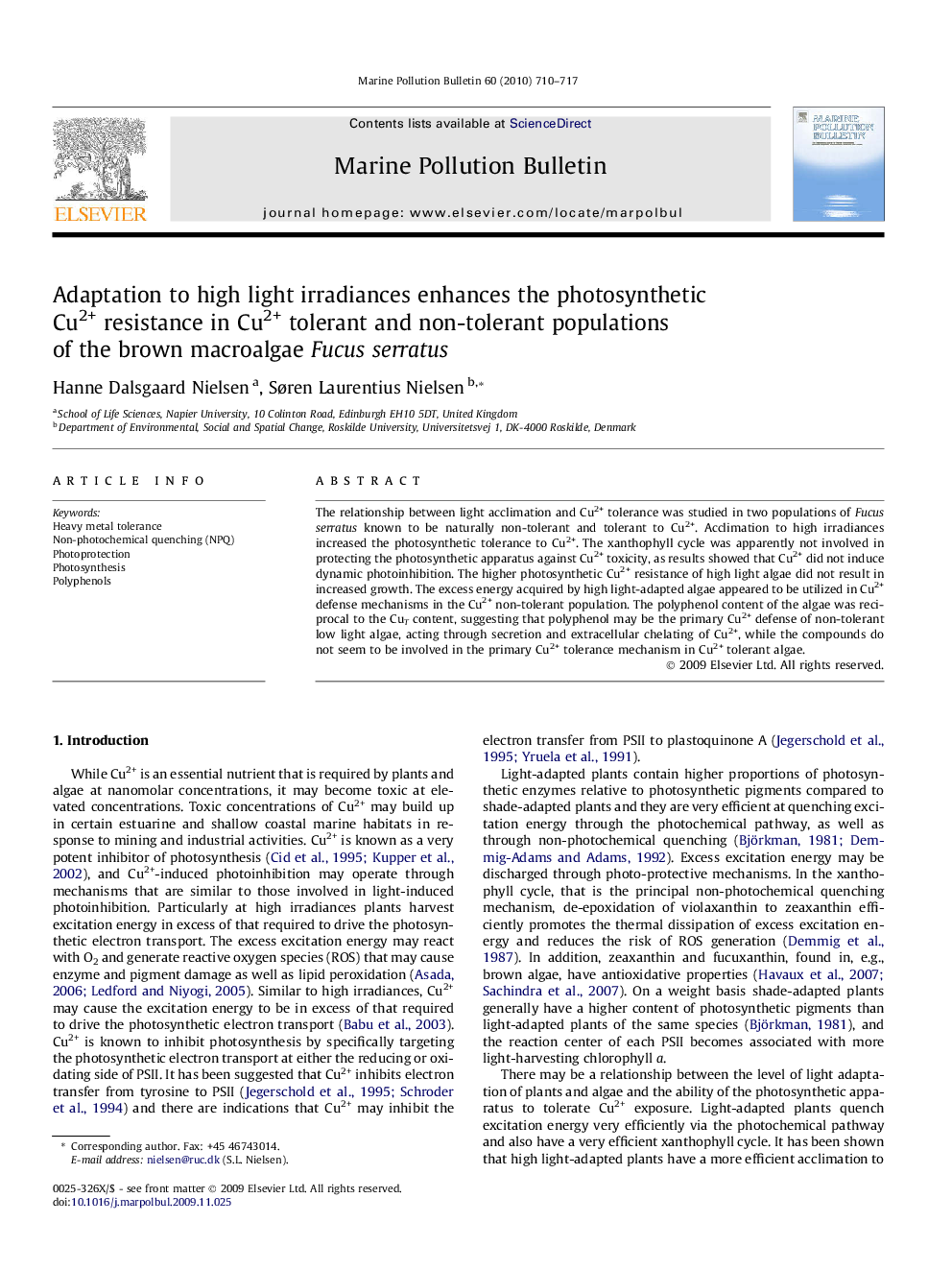| Article ID | Journal | Published Year | Pages | File Type |
|---|---|---|---|---|
| 6362790 | Marine Pollution Bulletin | 2010 | 8 Pages |
Abstract
The relationship between light acclimation and Cu2+ tolerance was studied in two populations of Fucus serratus known to be naturally non-tolerant and tolerant to Cu2+. Acclimation to high irradiances increased the photosynthetic tolerance to Cu2+. The xanthophyll cycle was apparently not involved in protecting the photosynthetic apparatus against Cu2+ toxicity, as results showed that Cu2+ did not induce dynamic photoinhibition. The higher photosynthetic Cu2+ resistance of high light algae did not result in increased growth. The excess energy acquired by high light-adapted algae appeared to be utilized in Cu2+ defense mechanisms in the Cu2+ non-tolerant population. The polyphenol content of the algae was reciprocal to the CuT content, suggesting that polyphenol may be the primary Cu2+ defense of non-tolerant low light algae, acting through secretion and extracellular chelating of Cu2+, while the compounds do not seem to be involved in the primary Cu2+ tolerance mechanism in Cu2+ tolerant algae.
Keywords
Related Topics
Physical Sciences and Engineering
Earth and Planetary Sciences
Oceanography
Authors
Hanne Dalsgaard Nielsen, Søren Laurentius Nielsen,
